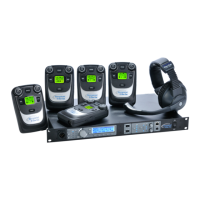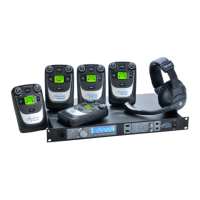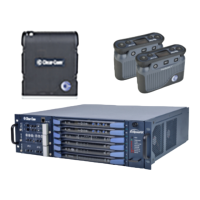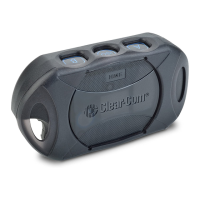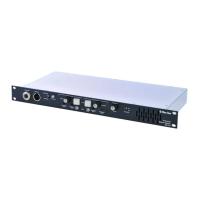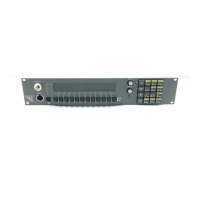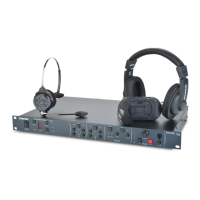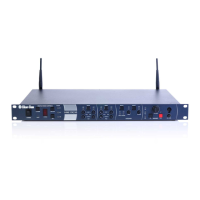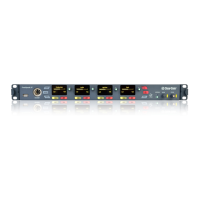9 Tempest®2400 2-Channel Wireless Intercom System
With 2xTX technology, each audio packet is transmied twice, each on one of two consecuve hops. The loss of one packet
transmission in a harsh RF environment is common. However, because of the quasi-orthogonal frequency relaonship of
the consecuve redundant packet transmission, the potenal for loss of any single audio packet (2 consecuve data packet
transmissions) is dramacally reduced. In addion, each packet transmission is sent out from dierent antennas. This
unique approach enables Tempest to ulize spaal diversity, frequency diversity, me diversity and polarizaon diversity.
The 2-channel product does not operate with spaal or polar diversity due to the fact it uses a single antenna during
operaon.
Transmission redundancy and the incorporaon of various diversity techniques provide an RF system that is robust and
reliable under greatly varying operaonal condions. Because of this inherent design, Tempest delivers superior operaonal
range and greater levels of interference and mul path fade rejecon. Covering extremely large areas or mulple coverage
locaons can be problemac with tradional wireless intercom systems. Tempest ulizes dierent roaming features that
allow it to “roam” from one coverage zone to another. When a dierent BaseStaon is selected, the hopping paern and
key code of the BeltStaon is synchronized to the selected BaseStaon and the BeltStaon logs into the BaseStaon.
Audio latency is a crical factor in all digital systems. The hop duraon in Tempest is intenonally kept very short - under
5ms. This short hop duraon limits the amount of data that may be lost in any one hop. More importantly, it reduces system
latency, which can cause undesirable echo. Total one-way (BeltStaon to BaseStaon) system latency is less than 50ms.
Even with this short system latency, unwanted and distracng echo will occur when interfacing with hard wired party-line
intercom systems unless echo-reducon technology is implemented. Echo is primarily the result of ineciencies in the
conversion of the two-wire signal. This condion exists in analog systems as well, but it does not cause unwanted echo
because there is no system latency delay. Tempest uses advanced echo-cancellaon algorithms to eliminate this echo.
Wireless intercom systems are oen used in high-noise environments that require special design consideraon for eecve
operaon. Tempest operates extremely well even in very high ambient noise levels. This is primarily due to specic design
criteria which allow Tempest to achieve an audio dynamic range of greater than 94dB. This is more than double that of
most other digital wireless communicaon systems. This design makes Tempest ideal for use at sporng venues, concerts
and other events where unwanted noise levels are high.
Tempest oers a host of features and technology to ensure that it performs well in almost all producon environments
virtually anywhere in the world with no licensing requirements or fees.
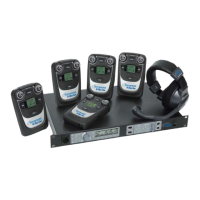
